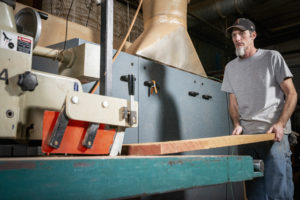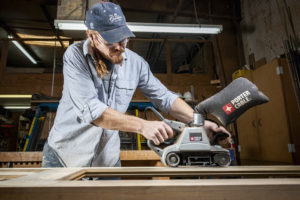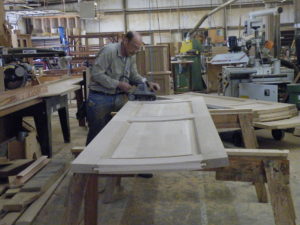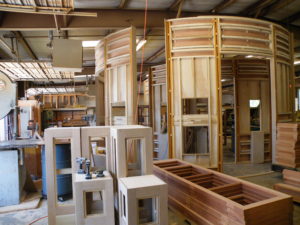creative passion for craftsmanship and authenticity
We thoroughly enjoy working closely with and helping contractors, architects and homeowners realize their millwork vision. We deeply value those trusted relationships and strive to earn our clients’ loyalty every day. Forty five years of building high-end custom doors, historic windows and classical moulding has taught us a great deal, yet we continue to cultivate a working environment where our experienced and dedicated craftsmen can learn and grow.
Reach Out With A QuestionHow It's Made...
Customer’s architectural drawings or concepts are turned into CAD shop drawings for approval. This is a critical step for quality.
Once approved, the shop drawings are used to create a cut sheet that is sent to the shop. The cut sheet will include all the door parts – stiles, rails, panels, jambs, stops and moulds – to be cut, shaped and assembled into the door.

Rough cut lumber from the mill is straight-line ripped, planed and jointed to the required dimensions for each part.
Experience and careful analysis of the wood’s grain and character help ensure stability and the desired appearance for a durable and beautiful finished door.

The knife grinding room. Over the many years, our shop has built an impressive collection of shaper, moulding and insert knives and cutters for cope & stick and moulding profiles.
Precision grinding yields accuracy to the architect’s and client’s design, as well as incredible smoothness of finish and tightness of joinery – a hallmark of Lynn Floyd Architectural Millwork.

In the shop the rough materials are cut, jointed, planed for stiles and rails parts and for panels.
The stiles and rails are run through the shapers or moulder to cut the stick and cope. Tenons are cut on the rails and the stiles are mortised.

Panel parts are glued, sanded and the panel profile is cut.
All the parts are assembled, glue and clamped.

The door is then sanded and inspected, then its ready for delivery.



The finished product!



